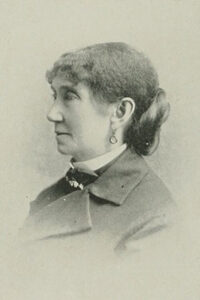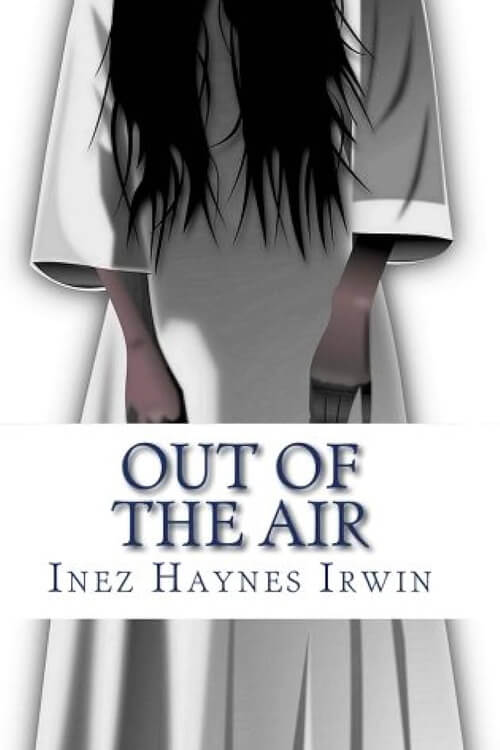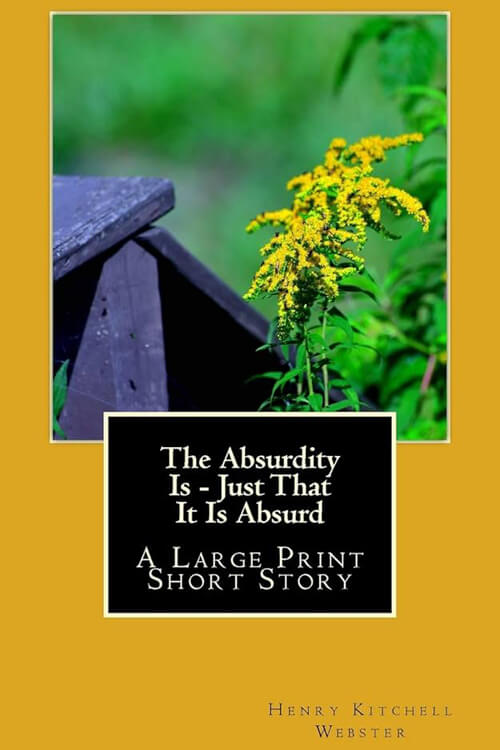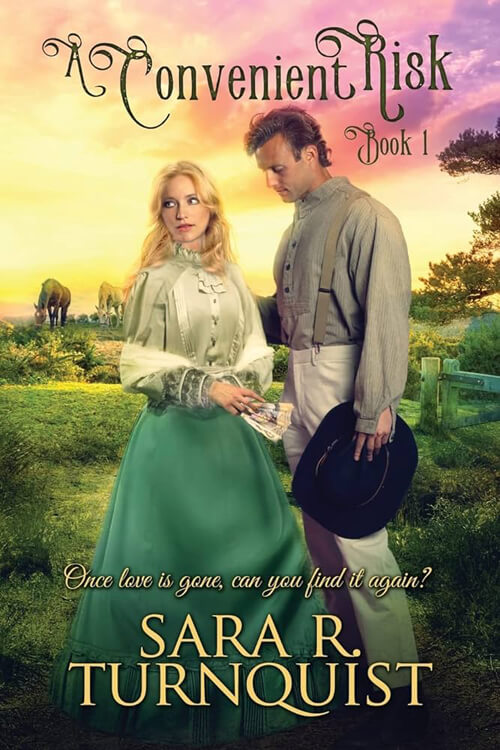
Aikenside
The good people of Devonshire were rather given to quarreling— sometimes about the minister’s wife, meek, gentle Mrs. Tiverton, whose manner of housekeeping, and style of dress, did not exactly suit them; sometimes about the minister himself, good, patient Mr. Tiverton, who vainly imagined that if he preached three sermons a week, attended the Wednesday evening prayer-meeting, the Thursday evening sewing society, officiated at every funeral, visited all the sick, and gave to every beggar who called at his door, besides superintending the Sunday school, he was earning his salary of six hundred per year.
Sometimes, and that not rarely, the quarrel crept into the choir, and then, for one whole Sunday, it was all in vain that Mr. Tiverton read the psalm and hymn, casting troubled glances toward the vacant seats of his refractory singers. There was no one to respond unless it were good old Mr. Hodges, who pitched so high that few could follow him; while Mrs. Captain Simpson—whose daughter, the organist, had been snubbed at the last choir meeting by Mr. Hodges’ daughter, the alto singer—rolled up her eyes at her next neighbor, or fanned herself furiously in token of her disgust.
Latterly, however, there had come up a new cause of quarrel, before which every other cause sank into insignificance. Now, though the village of Devonshire could boast but one public schoolhouse, said house being divided into two departments, the upper and lower divisions, there were in the town several district schools; and for the last few years, a committee of three had been annually appointed to examine and decide upon the merits of the various candidates for teaching, giving to each, if the decision were favorable, a little slip of paper certifying their qualifications to teach a common school. Strange that over such an office so fierce a feud should have arisen; but when Mr. Tiverton, Squire Lamb, and Lawyer Whittemore, in the full conviction that they were doing right, refused a certificate of scholarship to Laura Tisdale, niece of Mrs. Judge Tisdale, and awarded it to one whose earnings in a factory had procured for her a thorough English education, the villagers, to use a vulgar phrase, were at once set by the ears, the aristocracy abusing, and the democracy upholding the dismayed trio, who, as the breeze blew harder, quietly resigned their office, and Devonshire was without a school committee.
In this emergency something must be done, and, as the two belligerent parties could only unite on a stranger, it seemed a matter of special providence that only two months before, young Dr. Holbrook, a native of modern Athens, had rented the pleasant little office on the village common, formerly occupied by old Dr. Carey, now lying in the graveyard by the side of some whose days he had prolonged, and others whose days he had surely shortened. Besides being handsome, skillful, and quite as familiar with the poor as the rich, the young doctor was descended from the aristocratic line of Boston Holbrooks, facts which tended to make him a favorite with both classes; and, greatly to his surprise, he found himself unanimously elected to the responsible office of sole Inspector of Common Schools in Devonshire. It was in vain that he remonstrated, saying he knew nothing whatever of the qualifications requisite for a teacher; that he could not talk to girls, young ones especially; that he should make a miserable failure, and so forth. The people would not listen. Somebody must examine the teachers and that somebody might as well be Dr. Holbrook as anybody.
Read or download Book
Mary Jane Holmes
Mary Jane Holmes (April 5, 1825 – October 6, 1907) was an American author who published 39 novels, as well as short stories.
Biography.
Her first novel sold 250,000 copies; and she had total sales of 2 million books in her lifetime, second only to Harriet Beecher Stowe. Her books included: “Tempest and Sunshine” (1854), “English Orphans” (1855), “Homestead on the Hillside” (1855), “Lena Rivers” (1856), “Meadow Brook” (1857), “Dora Deane” (1858), “Cousin Maude” (1860), “Marian Gray” 186^, “Hugh Worthington” (1864), “Cameron Vide” (1867). “Rose Mather” (1868), “Ethelyn’s Mistake” (1869), “Edna Browning” (1872), “Mildred” (1877), “Forest House” (1879), “Daisy Thornton,” “Queenie Hetherton” (1883), “Christmas Stories” (1884), “Bessie’s Fortune” (1885). “Gretchen” (1887), “Marguerite” (1891).
Portraying domestic life in small-town and rural settings, she examined gender relationships, as well as those of class and race. She also dealt with slavery and the American Civil War with a strong sense of moral justice. Since the late 20th century, she has received fresh recognition and reappraisal, although her popular work was excluded from most 19th-century literary histories.
Early life and education
Mary Jane Hawes was born in Brookfield, Massachusetts in 1825, the fifth of Fanny (Olds) and Preston Hawes’ nine children. The household was economically modest, but the parents encouraged intellectual endeavor. She may also have been influenced by her uncle, Rev. Joel Hawes (1789–1867), for many years minister at the First Congregational Church in Hartford, Connecticut, and known for his published sermons and other writings. Preston Hawes died when Mary Jane was 12 and she started teaching school at 13. Interested in writing from an early age, she published her first story at 15.
Marriage and family
On August 9, 1849, Hawes married Daniel Holmes, a graduate of Yale College from New York City. They moved for a time to Versailles, Kentucky in the Bluegrass Region, where they both taught for a few years. These were formative years, as Holmes used the small-town, rural setting and people she knew as inspiration for her first novel and others set in the antebellum South.
In 1852 the Holmes family returned to New York and settled in Brockport, a short distance west of Rochester, where Daniel read law and was ultimately admitted to the bar. He went into practice and also served in local politics. They had no children. Holmes’ supportive marriage was one she used as a model for several portrayed in her novels.
Career
Holmes used her experiences in Kentucky for the material of several novels. In 1854 at the age of 29, she published her first novel, Tempest and Sunshine. Its central girl characters, Julia and Fanny, were reportedly modeled on the local family of John Singleton and his daughters Bettie and Susan. The portrayal of girls with contrasting characters was resolved with a sense of moral justice, as they both traveled personal journeys of growth. While sales of the novel were slow at first, they steadily continued and ultimately totaled about 250,000 copies. Reprinted in 1886, this novel was her most popular. She was first published by Appleton, and later for 20 years by G.W. Carleton, which was succeeded by G.W. Dillingham, all of New York City. As The Nation noted in its obituary at her death:
It is an eternal paradox of our world of letters that the books that enjoy the largest sales are barely recognized as existing by the guardians of literary tradition. Mrs. Mary Jane Holmes, who died Sunday at Brockport, N.Y., wrote thirty-nine novels with aggregate sales, it is said, of more than two million copies, and yet she had not even a paragraph devoted to her life and works in the histories of American Literature.
The theme of most of her novels was domestic life, reflecting society in the antebellum years, as well as during and after the American Civil War. Her books were very popular and she was published by major firms in New York. Her sales were second nationally only to those of Harriet Beecher Stowe; in total Holmes sold more than two million books.






